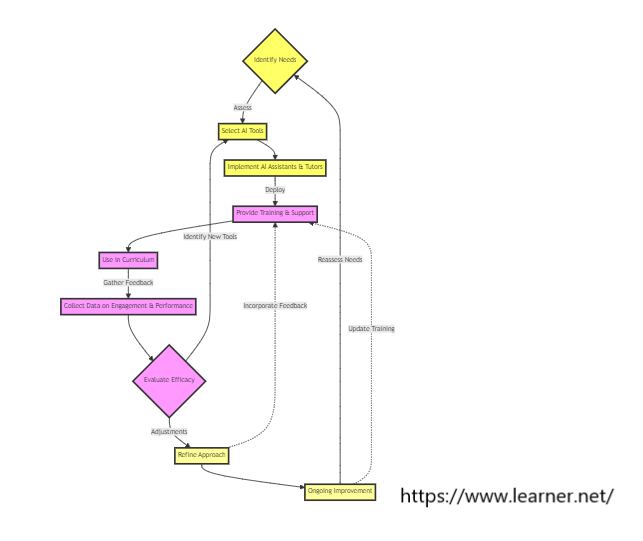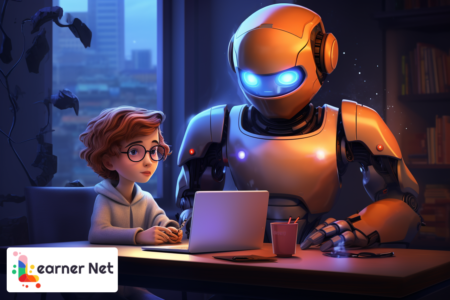Learning disabilities affect a significant portion of the population according to the World Health Organization, with an estimated prevalence of about 16% of the global population or one in every six people. These disabilities present unique challenges for learners, particularly in the realm of education where traditional teaching methods may not always accommodate their needs. With the rise of online learning environments and digital academies, addressing learning disabilities takes on a new dimension, requiring innovative and often new strategies to ensure more effective, inclusive educational environments and support for all students.
In an online learning environment, students with learning disabilities face additional hurdles that may not be present in traditional classroom settings. Distance learning platforms often rely heavily on written instructions, reading materials, and independent study, which can pose challenges for individuals with dyslexia, dysgraphia, or other related learning disabilities in terms of their educational pursuits. Moreover, the lack of face-to-face interaction with instructors and peers can exacerbate feelings of isolation and frustration for these students.
Understanding the various types of learning disabilities is essential for educators and tutors in online settings. Dyslexia, for example, is characterized by difficulties with reading and language processing, while dysgraphia affects writing abilities, and dyscalculia impairs mathematical skills. Additionally, conditions such as ADHD may impact attention span and focus, making it challenging for students to stay engaged in online lessons. By recognizing these issues, online tutors and teachers can tailor their approaches to better support students with more diverse and eclectic learning needs.
For distance learners with learning disabilities, accessing appropriate accommodations and support is crucial for their academic success. Implementing assistive technologies, such as text-to-speech software or screen readers, can help students with reading difficulties navigate online materials more effectively. Similarly, providing alternative formats for assignments and assessments, such as audio recordings or visual presentations, can accommodate different learning styles and preferences.
In addition to addressing the needs of students, online tutors and teachers must also be equipped to provide effective support and guidance. This requires not only knowledge of specific learning disabilities but also empathy and patience in working with students who may struggle in virtual environments.
Developing strong communication skills, including clear and concise instructions, can help mitigate misunderstandings and frustration. Moreover, fostering a supportive and inclusive online community can create a sense of belonging for students with learning disabilities, encouraging them to actively participate and engage with their peers.
The transition to online learning has brought about new challenges and opportunities for students with learning disabilities. While digital platforms offer flexibility and accessibility, they also require innovative solutions to ensure that all learners have equal opportunities for success. By embracing a holistic approach that addresses the unique needs of students with learning disabilities, educators and tutors can create inclusive online environments that empower every student to thrive academically.
Overall, understanding the complexities of learning disabilities and their implications for online learning is essential for both students and educators alike. By adopting inclusive practices and leveraging available resources, online tutors and teachers can effectively support students with diverse learning needs, fostering a more inclusive culture and accessibility in digital education. In doing so, they not only enhance the learning experience for individual students but also contribute to the broader goal of equity and inclusion in online education.
Understanding Learning Disabilities – The Basics
The landscape of learning disabilities encompasses a vast array of conditions, each presenting unique challenges to students and educators alike. Attempting to cover the entirety of learning disabilities in a single article would be an ambitious undertaking, as the range and complexity of these conditions are far-reaching and multifaceted.
Among the various types of learning disabilities, dyslexia, dysgraphia, dyscalculia, ADHD (Attention Deficit Hyperactivity Disorder), and Auditory Processing Disorder stand out as some of the most commonly recognized. Dyslexia, for instance, affects the ability to read and interpret words accurately, often leading to difficulties in spelling and comprehension. Dysgraphia involves challenges in writing, including issues with handwriting, spelling, and organizing thoughts on paper. Dyscalculia pertains to difficulties in understanding and manipulating numbers, which can impact math skills and problem-solving abilities.
ADHD is characterized by difficulties with attention, hyperactivity, and impulsivity, which can affect academic performance and behavior in classroom settings. Auditory Processing Disorder, on the other hand, involves challenges in processing and making sense of auditory information, leading to difficulties in following verbal instructions and distinguishing between similar sounds.
Despite their distinct manifestations, learning disabilities often intersect and coexist within individuals, making diagnosis and intervention complex processes. However, early identification and targeted support can significantly improve outcomes for students with learning disabilities, allowing them to reach their full potential in academic and social domains.
In recent years, there has been growing recognition of the role that assistive technology and AI-powered tools can play in supporting students with learning disabilities. AI chatbots and AI powered assistants, in particular, have emerged as valuable resources for personalized learning and skill development. These technologies can adapt to individual learning styles and preferences, providing tailored instruction and feedback in real-time.
For students with dyslexia, AI chatbots can be used in conjunction with a text-to-speech functionality, allowing the students to listen to written content instead of relying solely on visual reading. Similarly, students with dyscalculia can benefit from AI-powered math tutoring programs that break down complex concepts into manageable steps and provide interactive exercises. AI virtual assistants can also assist students with ADHD by offering reminders and organization tools to help them stay focused and on task.
Moreover, AI technology has the potential to address the unique challenges of Auditory Processing Disorder by providing auditory feedback and reinforcement in a clear and structured manner. By incorporating speech recognition capabilities, AI chatbots can also assist students in improving their language comprehension and communication skills.
In addition to supporting students with learning disabilities, AI chatbots and virtual assistants can also be valuable tools for educators and tutors working with these students. These technologies can provide insights into student progress and learning patterns, allowing educators to adjust their teaching strategies and interventions accordingly. By automating routine tasks and providing access to a wealth of educational resources, AI can free up time for educators to focus on individualized instruction and support.
While the landscape of learning disabilities is vast and diverse, AI chatbots and virtual assistants offer promising solutions for addressing the unique needs of students with these conditions. By leveraging the power of technology, educators and students alike can unlock new possibilities for learning and achievement.
Common challenges faced by students with learning disabilities
Students with learning disabilities encounter a multitude of challenges on a daily basis that can significantly impact their academic performance and overall well-being, including adverse impacts on their mental health. These challenges manifest in various areas, including reading, writing, math, organization, time management, focus, and attention.
These difficulties are not indicative of a lack of intelligence but rather stem from differences in how the brain processes information that is taken in by the individuals suffering from these conditions. In short, these people are fully capable of learning, but may need to take a different approach. The fact that this adversely impacts around sixteen percent of the population should indicate the increased need for addressing these issues in the increasingly common online learning environments.
Reading poses a significant challenge for many students with learning disabilities, particularly those with dyslexia. These individuals may struggle with decoding words, recognizing sight words, and understanding the meaning of text. As a result, reading comprehension can be severely impacted, making it difficult for students to keep up with their peers in class and complete assignments effectively.
Similarly, writing can present significant hurdles for students with learning disabilities such as dysgraphia. These individuals may struggle with handwriting, spelling, grammar, and organizing their thoughts coherently on paper. The act of writing itself can be laborious and frustrating, leading to feelings of inadequacy and discouragement.
Mathematics can also be a source of frustration for students with learning disabilities like dyscalculia. These individuals may have difficulty understanding numerical concepts, memorizing math facts, and solving mathematical problems. Complex calculations and abstract reasoning may pose particular challenges, impacting their ability to succeed in math-related subjects and tasks.
Organization and time management skills are crucial for academic success, yet many students with learning disabilities struggle in these areas. Difficulties with executive functioning can make it challenging for individuals to plan, prioritize, and keep track of assignments, deadlines, and responsibilities. As a result, they may frequently miss deadlines, forget important tasks, and feel overwhelmed by the demands of school and daily life.
Focus and attention are fundamental for effective learning, but students with learning disabilities, particularly those with ADHD, often struggle to maintain concentration and stay on task. These individuals may be easily distracted by external stimuli, have difficulty filtering out irrelevant information, and exhibit impulsive behavior. As a result, they may have trouble following instructions, completing assignments, and staying engaged in classroom activities.
Addressing these challenges requires a comprehensive approach that includes individualized instruction, targeted interventions, and support services tailored to the unique needs of students with learning disabilities. Educators, parents, and support professionals play a crucial role in providing accommodations, modifications, and assistive technologies to help these students succeed in school and beyond.
Students with learning disabilities face a myriad of challenges in their daily lives, from difficulties with reading, writing, and math to problems with organization, time management, focus, and attention. These challenges can significantly impact their academic performance, self-esteem, and overall well-being. However, with the right support and accommodations, these students can overcome obstacles and achieve their full potential.
Strategies for Students with Learning Disabilities
For students with learning disabilities, discovering and implementing effective methods and strategies tailored to their unique needs is essential for their academic success and personal growth, not to mention their mental health. While external support from educators, parents, and online tutors can provide valuable guidance and assistance, empowering students to take ownership of their learning journey is paramount.
Each student with a learning disability has a distinct set of strengths, weaknesses, and learning preferences. What works for one student may not necessarily work for another. Therefore, it is crucial for students to actively participate in identifying their own challenges and exploring potential solutions that align with their individual learning styles and goals.
By actively involving students in the process of determining their best methods and strategies, they develop a sense of agency and autonomy over their learning, and more importantly perhaps, some semblance of control over any disabilities that they may be facing. This sense of ownership fosters confidence and self-efficacy, empowering students to overcome obstacles and navigate challenges with resilience and determination.
Online tutors can play a significant role in supporting students with learning disabilities in this journey of self-discovery and skill development. Through personalized tutoring sessions, tutors can collaborate with students to assess their strengths and weaknesses, identify areas for improvement, and co-create strategies for addressing challenges.
Rather than simply providing solutions or answers, online tutors can serve as facilitators, guiding students through a process of critical thinking, problem-solving, and reflection. Encouraging students to experiment with different approaches, adapt their strategies based on feedback, and persist in the face of setbacks fosters a growth mindset and a lifelong commitment to learning.
Furthermore, online tutors can leverage technology and digital resources to enhance the learning experience for students with learning disabilities. Interactive tools, multimedia materials, and adaptive learning platforms can cater to diverse learning styles and provide students with opportunities for hands-on exploration and engagement.
It is important for students to recognize that seeking help and guidance from others is not a sign of weakness but rather a proactive step towards self-improvement and success. By leveraging the expertise and support of online tutors, students can gain valuable insights, acquire new skills, and build confidence in their ability to overcome challenges.
Empowering students with learning disabilities to determine their own best methods and strategies is essential for fostering independence, resilience, and academic success. Online tutors can play a pivotal role in providing guidance and support, but ultimately, it is the student’s active participation and self-directed learning that leads to meaningful growth and achievement.
Utilizing assistive technology for physiological limitations in learning
For students with learning disabilities who rely on online learning environments, assistive technologies can serve as invaluable tools to support their academic endeavors. Three commonly used assistive technologies include text-to-speech software, speech-to-text software, and graphic organizers, each offering unique benefits in facilitating learning and comprehension.
Text-to-speech software converts written text into spoken language, allowing students with reading difficulties, such as dyslexia, to access digital content more easily. By listening to the text being read aloud, students can overcome challenges associated with decoding words, recognizing sight words, and understanding complex passages. This technology enables students to engage with written material more effectively, enhancing comprehension and retention of information.
Speech-to-text software, on the other hand, enables students to dictate spoken words that are then converted into written text. This technology is particularly beneficial for students with dysgraphia or other writing difficulties, as it eliminates the need for traditional handwriting or typing. By verbalizing their thoughts and ideas, students can bypass barriers related to spelling, grammar, and organization, allowing them to express themselves more freely and efficiently.
Graphic organizers are visual tools that help students organize and structure information in a coherent manner. These tools can take various forms, including diagrams, charts, and timelines, and are especially useful for students with learning disabilities such as ADHD or executive functioning difficulties.
Graphic organizers provide a visual framework for understanding relationships between ideas, sequencing events, and summarizing key concepts. By breaking down complex information into manageable chunks, graphic organizers support students in making connections, identifying patterns, and synthesizing information more effectively.
In an online learning environment, students with learning disabilities can leverage these assistive technologies to enhance their academic experience. Text-to-speech software can be used to read digital textbooks, articles, and other written materials, allowing students to access content independently and at their own pace.
Speech-to-text software enables students to participate in online discussions, complete written assignments, and take notes without the constraints of traditional writing or typing. Graphic organizers can help students organize research findings, plan essays, and outline presentations, promoting clarity and coherence in their work.
Moreover, these assistive technologies can be seamlessly integrated into various online learning platforms and applications, providing students with flexible and customizable support. Whether attending virtual classes, participating in online discussions, or completing assignments remotely, students with learning disabilities can benefit from the accessibility and functionality of these assistive technologies.
These assistive technologies such as text-to-speech software, speech-to-text software, and graphic organizers play a crucial role in supporting students with learning disabilities in online learning environments. By providing alternative means of accessing and processing information, these technologies empower students to overcome barriers to learning, express themselves effectively, and succeed academically.
Implementing multi-sensory learning techniques for Distance Learners with disabilities
Implementing multi-sensory learning techniques is essential for distance learners with disabilities, as it allows for greater engagement, comprehension, and retention of information. These learning techniques leverage multiple senses, including sight, touch, and movement, to accommodate diverse learning styles and preferences. In a virtual environment, distance learners can benefit from a variety of multi-sensory strategies, including hands-on activities, visual aids, and kinesthetic learning exercises.
Hands-on activities provide distance learners with opportunities to interact with materials and concepts in a tangible way, promoting active learning and exploration. For example, students with learning disabilities such as dyslexia or dyscalculia may struggle with abstract concepts in subjects like math or science. By incorporating hands-on activities, such as building models, conducting experiments, or using manipulatives, educators can make these concepts more concrete and accessible. This tactile approach allows students to engage with the material directly, reinforcing understanding and facilitating retention.
Visual aids are another effective tool for enhancing distance learning for students with disabilities. The students who are visual learners, in particular, benefit from the use of images, diagrams, charts, and videos to supplement textual information and explanations. For example, students with ADHD or executive functioning difficulties may struggle with organization and time management. Visual schedules, calendars, and timers can help these students stay on track and manage their tasks more effectively. Similarly, students with dyslexia can benefit from the use of color-coded text, highlighting, and visual mnemonics to aid in reading comprehension. By presenting information in a visually engaging format, educators can accommodate the diverse needs of distance learners and facilitate greater understanding and retention.
Kinesthetic learning exercises involve physical movement and activity, providing a kinesthetic connection to the material being learned. For example, students with ADHD or sensory processing disorders may benefit from movement breaks, yoga exercises, or fidget tools to help them stay focused and regulate their energy levels. Similarly, students with dysgraphia or fine motor difficulties may benefit from activities that involve tracing, writing in sand or shaving cream, or using handheld devices for handwriting practice. By incorporating movement and physical engagement into the learning process, educators can cater to the needs of kinesthetic learners and promote active participation and retention.
In a distance learning environment, implementing multi=sensory techniques may require creativity and adaptation to accommodate the limitations of virtual platforms. However, there are numerous resources and tools available to support educators in integrating hands-on activities, visual aids, and kinesthetic learning exercises into their online instruction. Virtual simulations, interactive whiteboards, digital manipulatives, and augmented reality applications are just a few examples of technology-enabled resources that can enhance multisensory learning experiences for distance learners.
Moreover, collaboration and communication tools, such as video conferencing platforms and online discussion forums, can facilitate interactive and collaborative learning experiences. Educators can encourage students to participate in group activities, discussions, and projects, allowing for peer interaction and support. Additionally, providing clear instructions, scaffolding activities, and offering individualized feedback are essential components of effective multi-sensory instruction in a distance learning context.
Implementing multi-sensory learning techniques is essential for distance learners with disabilities, as it promotes engagement, comprehension, and retention of information. By incorporating hands-on activities, visual aids, and kinesthetic learning exercises into online instruction, educators can accommodate diverse learning styles and preferences, foster active participation, and support the academic success of all students.
Breaking tasks into manageable steps to overcome learning disabilities
Breaking tasks into smaller, more manageable steps is a crucial strategy for students with learning disabilities to navigate their academic pursuits effectively and take control of their educational path. This approach allows students to approach complex tasks systematically, reducing overwhelm and increasing their chances of success.
For students with learning disabilities, tasks that may seem straightforward to others can often feel daunting and insurmountable. Breaking these tasks down into smaller steps provides a clear roadmap for students to follow, helping to alleviate anxiety and build confidence in their abilities. By focusing on one step at a time, students can make progress incrementally, celebrating small victories along the way.
Moreover, breaking tasks into smaller steps promotes a sense of agency and empowerment for students with learning disabilities. Rather than feeling overwhelmed by the magnitude of a task, students are able to take ownership of their learning process and actively engage in problem-solving and decision-making. This fosters independence and self-reliance, empowering students to navigate challenges and overcome obstacles with resilience and determination.
Additionally, breaking tasks into smaller steps allows students to identify and address areas of difficulty more effectively. By breaking down tasks into their component parts, students can pinpoint specific areas where they may need additional support or accommodations. This targeted approach enables educators and support professionals to provide tailored interventions and resources that address students’ individual needs and promote their academic growth and success.
Furthermore, mastering the skill of breaking tasks into smaller steps equips students with valuable life skills that extend beyond the classroom. The ability to approach tasks systematically and methodically is essential for achieving meaningful life goals and navigating the challenges of adulthood. By developing this skill early on, students with learning disabilities can build a strong foundation for future success and fulfillment.
Breaking tasks into smaller, more manageable steps is a critical strategy for students with learning disabilities to succeed academically and take control of their educational path. This approach promotes confidence, agency, and independence, empowering students to overcome obstacles and pursue meaningful life goals with determination and resilience. By mastering this skill, students can unlock their full potential and thrive in both academic and personal pursuits.
The importance of providing frequent feedback and positive reinforcement
Providing frequent feedback and positive reinforcement is essential for students with learning disabilities to thrive academically and in other educational pursuits. Feedback serves as a valuable tool for guiding students’ progress, reinforcing their efforts, and promoting continuous growth and improvement.
For students with learning disabilities, receiving timely and specific feedback is especially important for identifying areas of strength and areas for improvement. Constructive feedback helps students understand their strengths and weaknesses, allowing them to focus their efforts on areas where they need additional support or practice. By providing feedback that is clear, actionable, and tailored to students’ individual needs, educators and support professionals can help students make meaningful progress in their learning journey.
Positive reinforcement plays a crucial role in motivating students with learning disabilities and boosting their confidence and self-esteem. Recognizing and celebrating students’ achievements, no matter how small, helps to reinforce desired behaviors and encourages continued effort and perseverance. By acknowledging students’ progress and effort, educators and support professionals can foster a positive learning environment where students feel valued, supported, and motivated to succeed.
Moreover, frequent feedback and positive reinforcement help students with learning disabilities develop a growth mindset and a sense of agency over their learning. Rather than viewing challenges as insurmountable obstacles, students learn to see them as opportunities for growth and learning. By providing feedback that focuses on effort, progress, and resilience, educators and support professionals empower students to take ownership of their learning and persist in the face of adversity.
In addition to academic benefits, frequent feedback and positive reinforcement contribute to students’ overall well-being and sense of belonging in the educational community. Feeling acknowledged and supported by teachers and peers enhances students’ sense of self-worth and belonging, fostering a positive school climate where all students can thrive. This, in turn, promotes positive social and emotional development and helps students build meaningful connections with others.
Providing frequent feedback and positive reinforcement is crucial for students with learning disabilities to succeed academically and in other educational pursuits. Feedback helps students identify areas of strength and areas for improvement, while positive reinforcement motivates and empowers students to persist in their efforts.
By creating a supportive and encouraging learning environment, educators and support professionals can help students with learning disabilities reach their full potential and achieve their goals.
How Online Tutors Can Create a More Supportive Learning Environment for Students With Learning Disabilities
Creating a supportive learning environment for students with learning disabilities is paramount for online tutors, as it not only enhances the student experience but also sets tutors apart from their competitors and opens up opportunities for increased compensation and recognition.
First and foremost, online tutors must have a deep understanding of the unique challenges and needs faced by students with learning disabilities. This includes knowledge of various learning disabilities, such as dyslexia, dysgraphia, dyscalculia, ADHD, and auditory processing disorder, as well as strategies and accommodations to support these students effectively. By being knowledgeable about these topics, tutors can tailor their approach to meet the individual needs of each student, creating a more inclusive and supportive learning environment.
Additionally, online tutors should foster open communication and collaboration with students and their families. Building trust and rapport with students is essential for creating a safe and comfortable learning environment where students feel valued, understood, and supported. Tutors should actively listen to students’ concerns, preferences, and goals, and work collaboratively with them to develop personalized learning plans that address their unique needs and strengths.
Furthermore, online tutors can leverage technology and digital resources to enhance the learning experience for students with learning disabilities. Utilizing accessible platforms, tools, and materials ensures that all students can actively participate and engage in online learning activities. Tutors can also incorporate multimedia elements, interactive exercises, and adaptive technologies to accommodate diverse learning styles and preferences, making learning more engaging and effective for students with learning disabilities.
Creating a supportive learning environment for students with learning disabilities not only benefits the students but also benefits the tutor in several ways. By demonstrating expertise and competence in supporting students with learning disabilities, tutors can differentiate themselves from their competitors and attract more clients seeking specialized support. This can lead to increased work opportunities, referrals, and recognition within the online tutoring community.
Moreover, fostering positive relationships with students and their families can lead to greater job satisfaction and retention for tutors. By creating a supportive and nurturing learning environment, tutors can build long-term relationships with students and families, leading to repeat business and positive word-of-mouth recommendations. Additionally, satisfied clients are more likely to provide positive reviews and testimonials, further enhancing the tutor’s reputation and credibility in the online tutoring marketplace.
Creating a supportive learning environment for students with learning disabilities is essential for online tutors to differentiate themselves, attract clients, and enhance job satisfaction and retention. By understanding students’ unique needs, fostering open communication and collaboration, and leveraging technology effectively, tutors can create a more inclusive and effective learning experience for students with learning disabilities, ultimately benefiting both the students and the tutor.
Creating an inclusive classroom atmosphere
Creating an inclusive, safe online classroom atmosphere is essential for fostering a supportive learning environment where all students, including those with learning disabilities, feel valued, respected, and empowered to succeed. Encouraging collaboration and peer support, while emphasizing the strengths and individuality of students with learning disabilities, plays a crucial role in promoting an inclusive environment and celebrating diversity within the classroom.
One key aspect of creating an inclusive classroom atmosphere is promoting collaboration and peer support among students. Collaboration allows students to learn from one another, share ideas, and work together towards common goals. For students with learning disabilities, collaboration can provide opportunities for peer mentoring, where students support and learn from each other in a mutually beneficial relationship. By fostering a culture of collaboration, educators can create a sense of community and belonging within the classroom, where all students feel supported and valued.
Moreover, emphasizing the strengths and individuality of students with learning disabilities is essential for promoting a positive and inclusive classroom atmosphere. Each student brings unique strengths, talents, and perspectives to the learning environment, and it is important for educators to recognize and celebrate these differences. By highlighting the strengths and accomplishments of students with learning disabilities, educators can help build their confidence and self-esteem, while challenging stereotypes and promoting a culture of acceptance and respect.
Additionally, providing opportunities for students with learning disabilities to showcase their strengths and talents can help build a sense of pride and accomplishment. Whether through presentations, projects, or other creative outlets, allowing students to demonstrate their skills and abilities can boost their self-confidence and self-esteem. By creating a supportive and inclusive environment where all students feel valued and respected, educators can foster a positive learning experience for students with learning disabilities and promote their overall well-being.
Furthermore, promoting empathy and understanding among students is essential for creating an inclusive classroom atmosphere. Educators can facilitate discussions and activities that encourage students to empathize with their peers, understand their perspectives, and appreciate their unique experiences. By promoting empathy and understanding, educators can create a culture of acceptance and respect within the classroom, where students feel supported and valued for who they are.
Creating an inclusive classroom atmosphere involves encouraging collaboration and peer support, while emphasizing the strengths and individuality of students with learning disabilities. By fostering a culture of collaboration, celebrating diversity, and promoting empathy and understanding, educators can create a supportive learning environment where all students feel valued, respected, and empowered to succeed.
Flexible teaching methods and accommodations for students with learning disabilities
Introducing flexible teaching methods and accommodations for students with learning disabilities is beneficial to ensuring their academic success and fostering an inclusive learning environment. By implementing accommodations such as extended time for assignments and tests, as well as modified assignments and assessments tailored to meet individual needs, educators can provide students with the support they need to thrive academically.
One important accommodation for students with learning disabilities is an extended time-frame for assignments and tests. Many students with learning disabilities require additional time to process information, organize their thoughts, and complete tasks. Providing extended time allows these students to work at their own pace, reducing stress and anxiety and enabling them to demonstrate their knowledge and abilities more effectively. By offering this accommodation, educators can level the playing field for students with learning disabilities and ensure that they have an equal opportunity to succeed.
Additionally, modified assignments and assessments tailored to meet the individual needs of students with learning disabilities are essential for supporting their academic growth and progress. These modifications may include simplifying instructions, breaking tasks into smaller steps, providing alternative formats, or adjusting the content or complexity of assignments and assessments. By tailoring assignments and assessments to align with students’ strengths, interests, and learning styles, educators can ensure that students with learning disabilities can engage with the material meaningfully and demonstrate their understanding in ways that are accessible and equitable.
Furthermore, introducing flexible teaching methods that accommodate diverse learning needs benefits not only students with learning disabilities but also all students in the classroom. Differentiated instruction allows educators to adapt their teaching approaches, materials, and assessments to meet the individual needs of each student, regardless of their learning style or ability level. By embracing flexibility and inclusivity in their teaching practices, educators can create a more engaging, supportive, and effective learning environment for all students.
Moreover, introducing flexible teaching methods and accommodations for students with learning disabilities promotes a culture of equity and accessibility within the classroom. By recognizing and valuing the diverse strengths and abilities of all students, educators can create a learning environment where every student feels valued, respected, and empowered to succeed. This not only fosters academic achievement but also promotes social and emotional well-being, self-confidence, and self-advocacy skills among students with learning disabilities.
Introducing flexible teaching methods and accommodations for students with learning disabilities is essential for promoting their academic success and fostering an inclusive learning environment. By providing accommodations such as extended time for assignments and tests, as well as modified assignments and assessments tailored to meet individual needs, educators can support the diverse learning needs of all students and create a more equitable, accessible, and empowering learning environment.
Role of AI Chatbots and Virtual Assistants in Supporting Students with Learning Disabilities
The role of artificial intelligence or AI in online education is becoming increasingly prevalent, offering innovative solutions to better serve students with learning disabilities. AI technologies, including AI virtual assistants and AI tutors, have the potential to revolutionize online education by providing personalized support, adaptive learning experiences, and accessible resources tailored to meet the individual needs of students with learning disabilities.
One of the key benefits of AI in online education is its ability to provide personalized support and assistance to students with learning disabilities. AI virtual assistants, powered by natural language processing and machine learning algorithms, can interact with students in real-time, answering questions, providing explanations, and offering guidance. These virtual assistants can adapt to individual learning styles, preferences, and needs, providing customized support and feedback to help distance learners to navigate their coursework more effectively.
Furthermore, AI tutors can offer personalized tutoring sessions tailored to meet the specific needs of students with learning disabilities. These AI tutors can assess student strengths, weaknesses, and learning goals, and create adaptive learning plans to address their individual needs. By leveraging AI technologies, online education platforms can offer personalized tutoring services that are accessible, flexible, and effective for students with learning disabilities.
Moreover, AI technologies have the potential to create autonomous online courses that are specifically designed to meet the needs of students with learning disabilities. These courses can incorporate adaptive learning algorithms, interactive exercises, multimedia resources, and assistive technologies to accommodate diverse learning styles and preferences. By providing flexible, accessible, and engaging learning experiences, autonomous online courses powered by AI can help students with learning disabilities succeed academically and achieve their educational goals.
In recent years, AI technology has made significant advancements in the field of education, with an increasing number of online learning platforms integrating AI-powered features and functionalities. From intelligent tutoring systems to virtual learning environments, AI technologies are transforming the way students learn and educators teach. As AI continues to evolve and mature, its role in online education is expected to grow exponentially in the very near future.
The role of AI in online education is becoming increasingly prevalent, offering innovative solutions to better serve students with learning disabilities. AI virtual assistants and AI tutors can provide personalized support, adaptive learning experiences, and accessible resources tailored to meet the individual needs of students with learning disabilities. Moreover, AI technologies have the potential to create autonomous online courses that are specifically designed to accommodate diverse learning styles and preferences. As AI technology continues to advance, its role in online education is expected to grow significantly, revolutionizing the way students learn and educators teach.
Diagram 1: Cyclic Integration Process of AI in Education

Integration of AI Technology in Educational Settings
Learner Net, positioned at the vanguard of educational technology, facilitates the effective utilization of AI tools by online tutors and their students. Learner Net’s innovative platform empowers educators to fully automate online courses through AI tutors, revolutionizing the teaching and learning experience. By integrating AI-powered assistants and tutors, Learner Net offers a transformational approach to online education that addresses the diverse needs of learners, including those with learning disabilities.
Despite the potential benefits of AI in education, concerns and misconceptions about its implementation persist. Some educators worry that AI may replace human instructors or diminish the quality of education. However, the role of AI in education is not to replace teachers with AI, but to augment their capabilities, offering personalized support and enhancing the learning experience. By leveraging AI tools, educators can focus on providing individualized attention, fostering critical thinking skills, and cultivating a deeper understanding of course material.
Implementing Learner Net AI assistants and AI-powered tutors into existing curriculum and teaching methods requires careful planning and consideration. Educators should begin by assessing the specific needs and goals of their students, as well as the learning objectives of their courses. By identifying areas where AI interventions can enhance learning outcomes, educators can tailor their approach to meet the needs of diverse learners.
Moreover, it is essential for educators to provide training and support to both students and instructors on how to effectively utilize AI tools. Educators should demonstrate how AI assistants and tutors can supplement classroom instruction, provide additional resources, and offer personalized feedback. By fostering a culture of collaboration and experimentation, educators can empower students and instructors to embrace AI technologies as valuable tools for learning.
Furthermore, evaluating the efficacy of AI interventions for students, including those with learning disabilities, is essential for ensuring their success. Educators should begin by establishing clear goals and objectives for incorporating AI tools into their teaching practices. By collecting data on student engagement, performance, and satisfaction, educators can assess the impact of AI interventions on learning outcomes.
Additionally, educators should gather feedback from students and instructors on their experiences with AI tools, including any challenges or concerns they may have encountered. By soliciting input from stakeholders, educators can identify areas for improvement and refine their approach to using AI technologies in the classroom.
Learner Net is leading the way in enabling online tutors and their students to leverage AI tools effectively, including the automation of online courses through AI tutors. By addressing concerns and misconceptions about AI, educators can harness the power of AI to enhance teaching and learning outcomes.
Implementing Learner Net AI assistants and AI-powered tutors into existing curriculum and teaching methods requires careful planning, training, and evaluation. By embracing AI technologies as valuable tools for learning, educators can empower students and instructors to succeed in the digital age. Begin enlarging your online presence and improving your career as an online tutor and teacher, and enjoy an expanded and virtually untapped audience in the realm of online education with Learner Net.








There are no reviews yet.